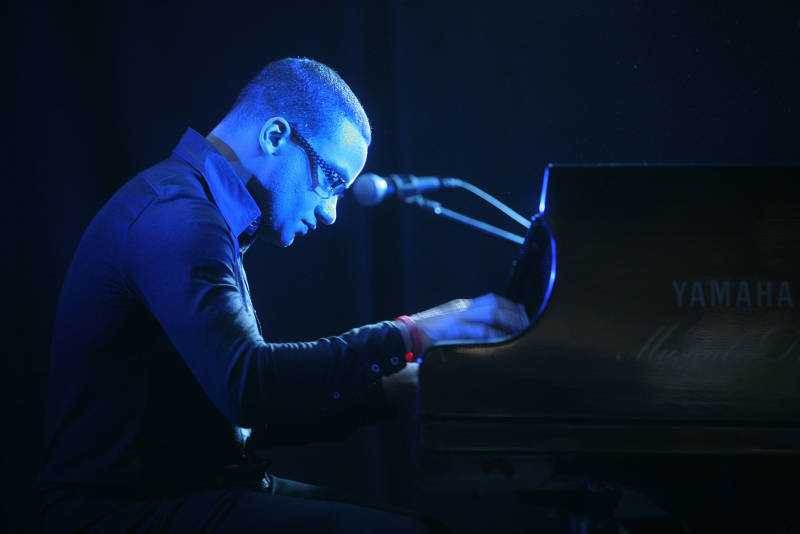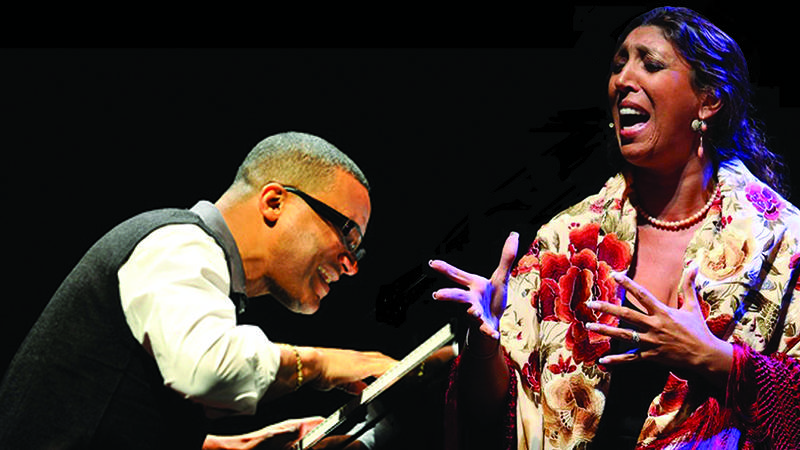During the golden age of Cuban music from the 1930s to the 1950s, when Havana’s torrid night life accelerated the evolution of styles and rhythms that swept the world (particularly son cubano, mambo and cha cha cha), Moré was at the center of the action. “Beny did everything — boleros, sones, montunos, guajiras,” Rubalcana says. “He made a recording with Orquesta Aragon singing cha cha cha. He tried many different styles and was a champion of everyone. Often you see people able to transmit a powerful lyric, a bolero, but they’re not powerful doing son, but he was able to do everything.”
Like so many flamenco stars, Caracol was born into a musical dynasty. Steeped in the music’s Gypsy roots, he was also one of the art form’s great crossover artists who reached an international audience in the 1940s performing with dancer, singer and actress Lola Flores. Some flamenco purists disdained his popular work, and his extravagant carousing damaged his reputation, but no one contested the extraordinary power of his voice.
At first glance, the intensity and anguish of Caracol’s flamenco might not seem to share much in common with Moré’s often playful and wise-cracking sones, but Nina Mendendez says that a deeper look reveals commonalities. “Flamenco has a whole area that’s incredibly humorous and playful, but it’s not what we hear about,” says the Bay Area Flamenco Festival’s founder and artistic director. “The art form is full of anguish and the darker side, but a very important part is the humorous side, which makes sense when you think of humor as a coping device in hard times.”
The collaboration between Rubalcaba and Fernández, who gave an incendiary performance at last year’s Flamenco Festival, grew out of a brief encounter in Seville a few years ago. Paired to perform in the documentary film Playing Lecuona, a musical celebration of the great Cuban composer Ernesto Lecuona, Rubalcaba came to the session largely unfamiliar with Fernández’s work.
“I knew her name, because she was already an important figure in flamenco,” he says. “I remember it took us about half an hour to understand the form and structure of Lecuona’s ‘Malagueña,’ and I was in love with the way she transmitted the music, the sound and power of the voice. There’s something chemical when you see somebody playing or doing art, and you connect or you don’t.”
Despite their evident chemistry, Rubalcaba didn’t foresee further collaboration until Fernández approached him and suggested exploring the music of Moré and Caracol. The project premiered Friday, March 4 at the Flamenco Festival Miami; Wednesday’s Herbst Theatre concert is the second-ever Oh Vida! performance. Featuring a percussionist from both traditions and a bassist, it proves to be a rhythmically charged encounter that honors the departed masters by creating something new.
“The first part of the process was to listen to them as much as we can, and then get divorced from that,” Rubalcaba says. “We don’t want to risk repeating what they did. We need to know what they did, but with a lot of respect find a way to combine rhythms and sounds — cajón, palmas, congas and bongos — and a vocabulary that goes from flamenco to jazz to Cuban music.”
Gonzalo Rubalcaba and Esperanza Fernández perform on Wednesday, March 9, at the Herbst Theatre. Tickets and more information here.



